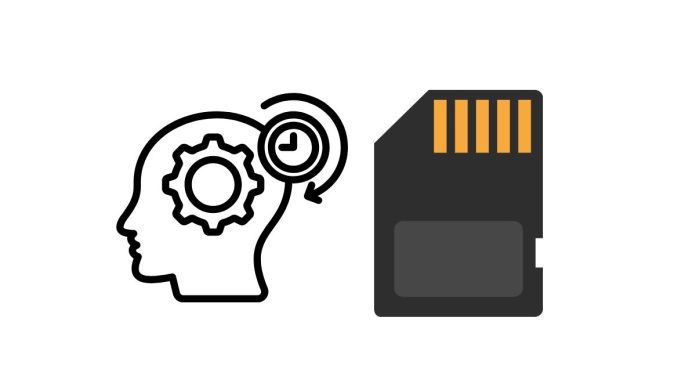Secondary memory refers to storage devices that are used to store data permanently or for long-term use. Unlike primary memory (RAM), which is volatile and temporary, secondary memory retains data even when the power is turned off. It is slower than primary memory but has a much larger storage capacity.
Types of Secondary Memory
1. Hard Disk Drive (HDD):
Description: A traditional storage device that uses magnetic disks to store data.
Capacity: Can range from several gigabytes (GB) to multiple terabytes (TB).
Speed: Slower than solid-state drives (SSDs) but still widely used for bulk storage.
Applications: Commonly used in desktops, laptops, and servers for general-purpose storage.
2. Solid State Drive (SSD):
Description: A modern type of secondary storage that uses flash memory to store data, without moving parts.
Capacity: Typically ranges from 120 GB to several terabytes.
Speed: Much faster than HDDs in terms of data read/write speeds, which results in quicker boot times and better overall system performance.
Applications: Widely used in laptops, desktops, and high-performance servers.
3. Optical Discs (CD/DVD/Blu-ray):
Description: Storage medium that uses laser technology to read and write data onto optical discs.
Capacity:
CD: Typically 700 MB.
DVD: 4.7 GB (single layer), 8.5 GB (dual layer).
Blu-ray: 25 GB (single layer), 50 GB (dual layer).
Speed: Slower than both HDD and SSD.
Applications: Used for data distribution (movies, music, software), backups, and archival storage.
4. USB Flash Drives:
Description: Small, portable storage devices that use flash memory to store data.
Capacity: Typically ranges from 4 GB to 1 TB or more.
Speed: Varies depending on the USB type (USB 2.0, USB 3.0, USB 3.1, USB-C).
Applications: Often used for transferring data between computers, portable storage, and backups.
5. External Hard Drives:
Description: Similar to internal hard drives but housed in an external enclosure and typically connected to a computer via USB or other ports.
Capacity: From 500 GB to multiple terabytes.
Speed: Depends on whether the external hard drive is an HDD or SSD.
Applications: Used for backups, data transfer, and large storage needs.
6. Magnetic Tapes:
Description: An older, yet still used, method of storing data on magnetic tape.
Capacity: Can store several terabytes of data.
Speed: Slower compared to modern storage solutions.
Applications: Primarily used for large-scale archival data storage and backups in data centers.
7. Network Attached Storage (NAS):
Description: A file-level storage device connected to a network that allows multiple users to access and share data.
Capacity: Can vary greatly, from a few terabytes to several petabytes, depending on the setup.
Speed: Dependent on the network connection (typically gigabit or higher).
Applications: Used in businesses or homes for data storage, sharing, and backup over a network.
8. Cloud Storage:
Description: A type of secondary storage where data is stored on remote servers and accessed via the internet.
Capacity: Varies depending on the cloud service provider, with some offering unlimited storage for a subscription fee.
Speed: Dependent on internet speed and server response times.
Applications: Used for backup, file sharing, and remote access to data.
Key Characteristics of Secondary Memory:
1. Non-Volatility: Unlike primary memory (RAM), secondary memory retains data even after the computer is powered off.
2. Capacity: Secondary memory has much larger storage capacity compared to primary memory, ranging from gigabytes to terabytes.
3. Speed: Generally slower than primary memory, though the speed varies based on the type of secondary storage (e.g., SSD is faster than HDD).
4. Cost: Secondary memory is typically more cost-effective in terms of storage capacity compared to primary memory.
Advantages of Secondary Memory:
Large Storage Capacity: Secondary memory provides vast amounts of storage for files, applications, and system data.
Permanent Storage: Data remains stored even after the device is powered off, making it suitable for long-term storage.
Cost-Effective: Secondary storage is cheaper per unit of data compared to primary memory.
Disadvantages of Secondary Memory:
Slower Access Speed: Data retrieval from secondary memory is slower than from primary memory.
Less Frequent Access: Unlike primary memory, secondary memory is not directly accessed by the CPU and is used primarily for long-term storage.
Conclusion:
Secondary memory is crucial for storing large amounts of data permanently. It is slower than primary memory but provides much higher
storage capacity. The choice of secondary storage device depends on factors like speed, capacity, cost, and specific use case requirements.


